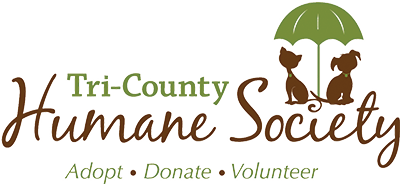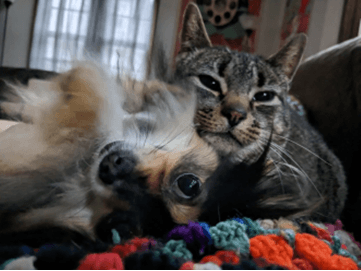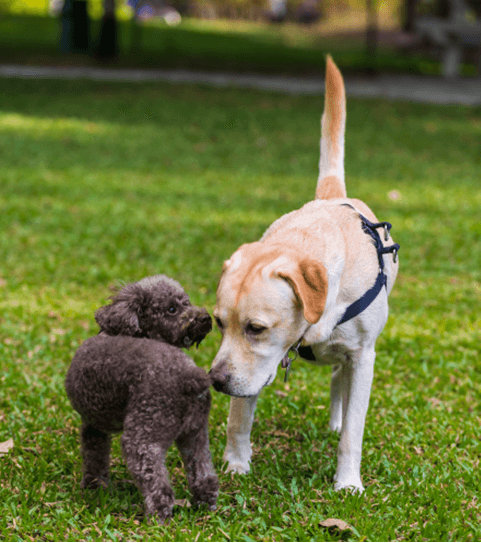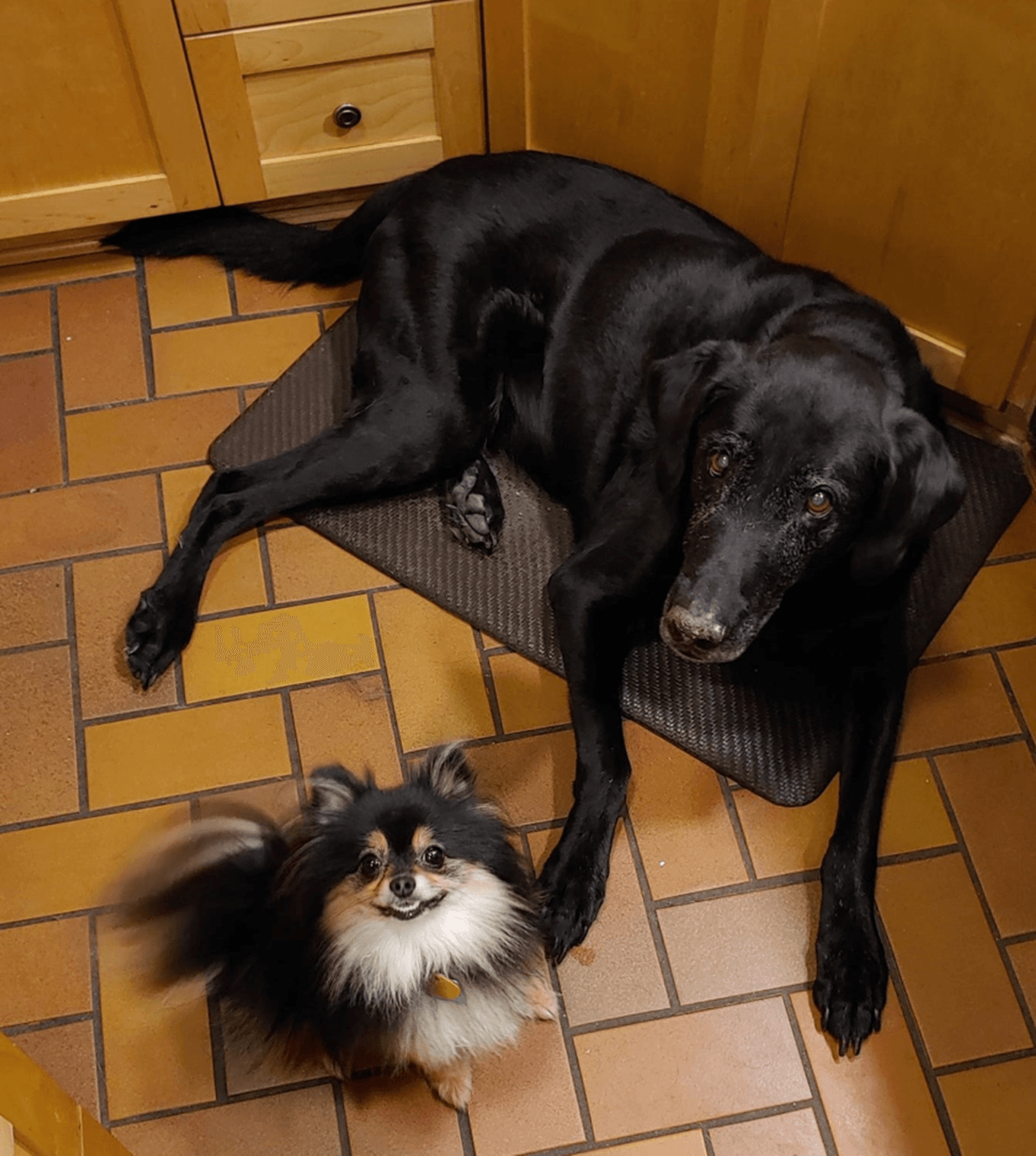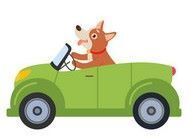Dog & Puppy Tips
NEW TO TCHS: If you are planning to adopt a dog from TCHS (or have recently adopted one), please ask a TCHS staff member about the GoodPup training program! TCHS is excited to partner with GoodPup on on this opportunity for customized, affordable, positive dog training that you can do from the comfort of your home!
Select a topic to read the entire article:
Although many people may be “team cat” or “team dog,” there are many of us who love them both equally! It’s important to ensure the safety of all our pets, and this is a special task when introducing new cats and dogs to one another.
Adopting a new pet is an exciting time, but resident pets may not share the same enthusiasm. Pet introductions can be stressful. Introductions gone wrong can lead to rehoming or returning a newly adopted pet.
Although we always recommend plenty of physical exercise for dogs, it’s just as important to provide mental exercise and enrichment! It is especially important when physical exercise options are limited.
All pets that are adopted from a shelter adjust at their own paces, but the "3-3-3" rule is pretty common.
Get a little Puppy Socialization 101!
Leash reactivity can be a real issue - but there are ways to manage it.
Separation anxiety is a challenge, but it can be a manageable one.
Coprophagia is the ingestion of feces. It was first believed that this behavior was caused by poor diet or poor health, but current research has discounted this. Dogs are historically scavengers, and coprophagia may be a scavenger behavior or they may learn this behavior from other dogs.
There was a time when every dog had a job. The border collie herded sheep, and the komondor guarded them. The Siberian husky moved the men of the North, while the Alaskan malamute hauled freight.
Does your sudden appearance in the kitchen at your dog's mealtime elicit a glare and a growl? Does a gift of rawhide or marrow bone send your usually mild-mannered canine diving under the nearest
coffee table while snarling,
A dog can become very possessive about certain objects. Guarding (also called possessive aggression) occurs with food and variety of objects valued by the dog, including favorite toys. It also may guard inappropriate objects such as shoes or a piece of trash.
Fido used to come when you called him and now he doesn't - what's with that?
Here's a suggestion for when your dog starts to ignore your "come" command. While it may not work overnight, you will see results in a short time and it will be well worth the little effort it takes.
Housesoiling in adult dogs ranks among the most common complaints of dog owners. Even the most reliably trained dog can have trouble controlling bowel or bladder function during illness or stress.
With careful planning, caution, and patience, a new dog can be introduced into a home that already has a resident cat or dog, and all can live in the same household contentedly.
For a dog that enjoys regular outdoor activity, nail trimming may not be needed. In many cases, walking on pavement maintains a dog’s nails at an acceptable length. However, there are steps to take to ensure nail trimming isn’t an unpleasant experience for your dog:
Obedience commands allow you to teach a dog desirable behavior in any given situation. Practicing obedience skills with your dog is also good exercise for your dog and provides it with mental stimulation.
Millions of people every year in the U.S. are victims of dog bites. Sixty percent of these victims are children. Dog bites are one of the most common reason children visit the emergency room, and the majority of the dog bites to children are from dogs the child knows.
Jumping problems are most often found with adolescents (dogs 6 to 18 months old). Toy, terrier and sporting breeds such as Italian Greyhounds, Poodles, Jack Russells, and Labrador Retrievers are notorious jumpers.
Dogs were originally domesticated to take advantage of their hunting ability. The hunting instinct is not uniform among individuals of any given breed; rather, it is usually seen as a range of behavioral tendencies.
In addition to basic needs such as food and shelter, a dog needs social interaction, positive attention from its owner, exercise and mental stimulation.
Crates can be training and safety devices and can benefit dog and owner alike. Crating on a humane schedule teaches puppies bladder and bowel control and limits the amount of destruction a chewing puppy can do to a home.
Young dogs with strong territorial drives commonly attempt to escape the confines of your home or yard. Inadequate attention and exercise, such as regular walks or play, contribute to the urge to escape.
Bringing home a new puppy is truly one of life's joys. Thoughtful pre-puppy preparations and a well-planned first 24 hours can give your fuzzy bundle of promise a head-start and make your dreams of the perfect family dog come true.
Pet Information - The old theory that one year in the life of the dog is equivalent to seven years in the life of a human has been abandoned. The new scale of equivalents shown below is now recognized.
Those weeks of careful monitoring have finally paid off — you're now the proud caretaker of a housebroken pup! But wait, is that a yellow stain partway up the drapes?
Try this home remedy for removing skunk odor from dogs.
As primates, we humans are big on eye contact. We can’t help but gaze into a cute dog’s eyes (especially those of our own beloved pooches!), but eye contact is actually an unnatural behavior for canines.
In an ideal world, puppies come from a highly reputable source, where someone lovingly keeps the litter area clean at all times. The new caretaker has a fenced-in yard to which no other dogs have access.
The first year of your puppy's life is the most important. With the proper diet, the right training and regular veterinary visits, you will ensure that your puppy will grow into a wonderful companion.
Chewing is a common complaint among those caring for dogs younger than a year old. They’re likely to chew for several reasons. For one, they’re curious creatures and they don’t have opposable thumbs. Their mouths are how they examine objects.
Dogs are social animals; lack of exercise, boredom and loneliness can lead to destructive behaviors such as digging, chewing and barking.
